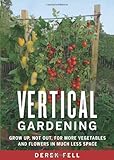Living Organic Online Store
From Seed to Table: A Practical Guide to Eating and Growing Green
Eating locally grown seasonal food is the solution to so many of the social and environmental problems raised by modern intensive food production methods. In From Seed to Table, organic gardener Janette Haase offers a month-by-month guide to growing a significant amount of food in a home garden. From the earliest salad leaves to the autumn's sweetest root vegetables, this book will show anyone with a small plot of earth and willing hands how to eat a healthier, more environmentally responsible diet--one with a smaller impact on both the environment and household food bills. The book's introductory chapter explains the importance of eating locally and seasonally and offers some practical considerations before beginning a garden of one's own. The rest of the book is divided into chapters covering each months. Haase takes the home gardener through the tasks of the gardening year, giving clear and helpful instructions for the work to be done at each time, from planning and planting to harvesting and storage. She also offers delicious seasonal recipes and menu ideas. From Seed to Table concludes with a thoughtful essay on food-related environmental issues, from greenhouse gasses to the genetic modification of seeds. Janette Haase was born in Montreal and was raised there and in Newfoundland. She holds a degree in geology from Queen's University. Haase started farming on fifty acres near Kingston, Ontario, and ran a large organic market garden. In 1998, as a single parent with a tiny front garden and no backyard in a village near Kingston, Haase planted vegetables and realized she could feed her family with what she could grow in a very small space.
Related Products
Vertical Gardening: Grow Up, Not Out, for More Vegetables and Flowers in Much Less Space
The biggest mistake gardeners make each season is starting out too big and then quickly realizingtheir large plot requires too much weeding, watering, and backbreaking labor. Vertical gardening guarantees a better outcome from the day the trowel hits the soil—by shrinking the amount of “floor” space needed and focusing on climbing plants that are less prone to insects, diseases, and animal pests. Notable author and gardener Derek Fell has tried and tested thousands of varieties of vegetables,flowers, and fruits and recommends the best plants for space-saving vertical gardening. His grow-up,grow-down system also shows which ground-level plants make good companions underneath and alongside climbing plants. Best of all, many of Fell’s greatest climbers and mutually beneficial plants are available in seed packets in every local garden center.With a mix of DIY and commercially available string supports, trellises, pergolas, raised beds, skyscraper gardens, and topsy-turvy planters, the vertical garden system reduces work, increases yields, makes harvesting easier, and can be practiced in spaces as small as a container or a one-by-four-foot strip. Vertical Gardening features 100 color photos of the author’s own vertical methods and showcases beautiful, troublefree perennials, shrubs, vegetables, annuals, and fruit perfect for this new, rewarding way to garden.
Teaming with Microbes: The Organic Gardener's Guide to the Soil Food Web, Revised Edition
The 2011 Garden Writers of America Gold Award for Best Writing/Book proves soil is anything but an inert substance. Healthy soil is teeming with life -- not just earthworms and insects, but a staggering multitude of bacteria, fungi, and other microorganisms. When we use chemical fertilizers, we injure the microbial life that sustains healthy plants, and thus become increasingly dependent on an arsenal of artificial substances, many of them toxic to humans as well as other forms of life. But there is an alternative to this vicious circle: to garden in a way that strengthens, rather than destroys, the soil food web -- the complex world of soil-dwelling organisms whose interactions create a nurturing environment for plants. By eschewing jargon and overly technical language, the authors make the benefits of cultivating the soil food web available to a wide audience, from devotees of organic gardening techniques to weekend gardeners who simply want to grow healthy, vigorous plants without resorting to chemicals.






